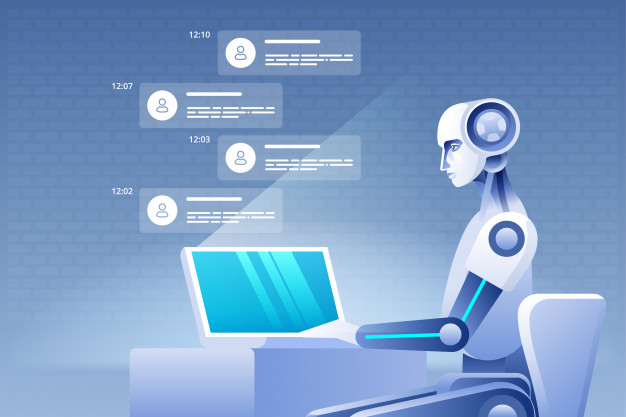See our latest developments Know More

See our latest developments Know More



You are not alone to do so as there are many enterprises trying to explore the choice of moving on from simple customer support to agile and responsive operations designed to provide a superior customer experience. To get the most out of your investment, it is very important to understand what your enterprise can expect to achieve by implementing Conversational AI in your business. Conversational AI takes one big step forward from the present inflexible replies by simple chatbots towards adaptive, intelligent and responsive action by true AI-based systems.
As per a report by Juniper Research, chatbots will provide a cost savings of $11 billion per year by the year 2023, which is nearly 190% more than the current annual savings of $6 billion. This will happen with the more intelligent application of Conversational AI technologies as the legacy IVR systems and simple chatbots will not be able to deliver these cost-saving results by themselves.
Conversational AI is a set of technologies, such as intelligent voice assistants or chatbots, that makes the communication between users and computer easier. This is performed by recognizing several languages, understanding text and language, and translating the meaning into native user language. It involves Machine Learning, Natural Language Processing (NLP), Natural Language Understanding (NLU), Natural Language Generation (NLG), Predictive Analysis, and Deep Learning. All these technologies combined together process large amounts of data and handle user interactions.
Compared to traditional NLP techniques, in modern AI applications, Deep Learning (DL) techniques are used to process the questions from a user, understand them, and finally provide the response in a natural manner. These complex pre-trained neural networks with millions of parameters can extract the meaning of user utterances as well as the context and sentimental factors. Even with little training data, these networks can be adapted to your use case easily whereas with previous generation of NLP techniques, you had to struggle a lot with fine tuning training data and writing custom rules for processing data. The future generation of AI platforms powered by Reinforcement Learning (RL) will improve themselves like humans do when they get more and more experience from user-interactions.
How does it differ from existing chatbots?
Traditional chatbots provide limited flexibility with their predefined responses that are strategically configured individually per use case and they work on the basis of hard-coded rule-based algorithms. If the chatbot is unable to provide the details the user was looking for, the predefined algorithm will either take the user back to the homepage or transfer the chat to a live agent.
But modern Conversational AIs are not the same as traditional chatbots. They can engage in conversations using both voice and text in a more human way. They can also gently react to subtleties that arise in conversations, providing more personalized experience. Implementing and maintaining modern Conversational AIs is much simpler. Overall, all of these facts add up to a huge gain in operational efficiency.
Some of the major differences between modern Conversational AI and existing chatbots are:
We see a reincarnation of Conversational AI in the enterprise world. The traditional chatbots did not really deliver the efficiency that an organization sought to achieve through automation in the past. Simply because the technology was not ready back then and there was a “chatbot” movement that created a kind of hype. Many failures of chatbots attest to this fact. Modern Conversational AI systems are here deliver that long broken promise, by true AI-based flexible design. Nowadays, we see conversational automation in industries like Healthcare, Telecommunication, Banking, Insurance, and IT getting implemented world-wide, proving the potential of the modern Conversational AI technology and its advanced benefits to customers.
Let’s check why Conversational AI matters for businesses today and what makes it stand out from other platforms.
Conversational AI is undoubtedly a cost-effective system and a smart investment for your enterprise. Let’s find out how you benefit from Conversational AI.
You get more frequent and quicker engagement with customers as Conversational AI provides real-time information on the go. Therefore, customers don’t have to wait for a long time; this improves the customer experience journey. With a high customer satisfaction ratio, additional sales happen both from the same customer and via his referrals. Conversational AI can also help to achieve higher sales by cross-selling products from your enterprise that the customer might not have known earlier.
Adding infrastructure via a cloud-based implementation to Conversational AI is a fast and inexpensive method instead of hiring new staff members. If your enterprise is expanding to the international market, conversational AI helps to scale your business faster in a timely manner.
Standard chatbots are not that great with their interface and still use old ways to keep users waiting for a resolution. At the end, you get a frustrated customer who has no clue how long to wait for a live agent. This is not a good sign for the health of your business.
On the other hand, modern Conversational AI systems have user-friendly interfaces that support both text and voice. Telephony can be considered as a new addition to the stack of interfaces for Conversational AI, which was not possible before with traditional NLP approaches. Omni-channel engagement becomes entirely feasible today which allows an enterprise to engage with its customers via Web-based Text, WhatsApp, Facebook Messenger and Voice telephony.
The existing chatbots are from an earlier generation of AI technology, whereas modern Conversational AI is a result of recent breakthroughs in Deep Learning technologies. Businesses get many benefits from Conversational AI platforms including satisfied customers and far better digital experience for new and existing customers. So, it is definitely a smart investment move for your enterprise. It is time to move on to this new digital experience for your enterprise!